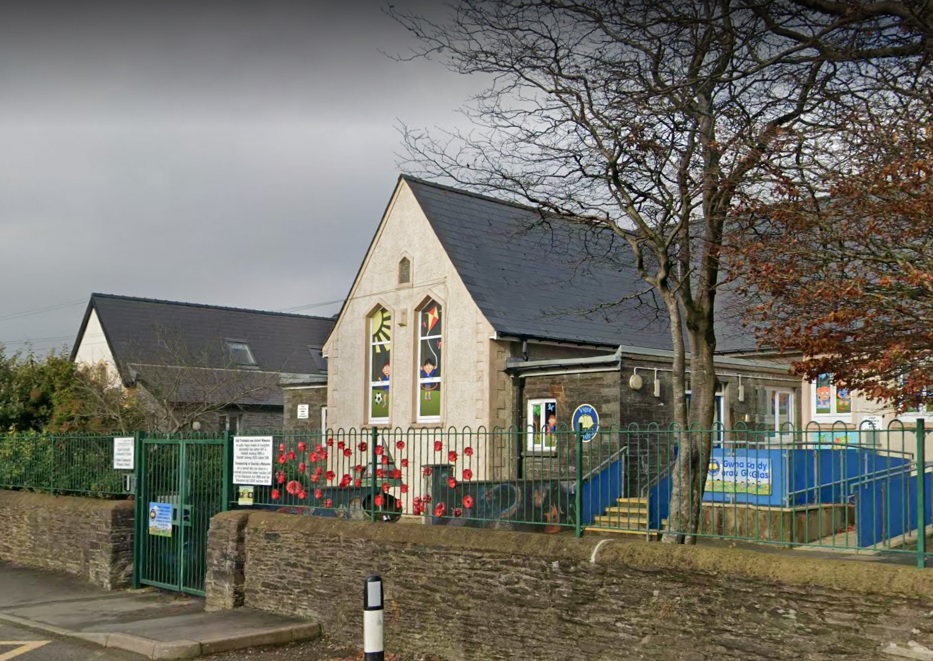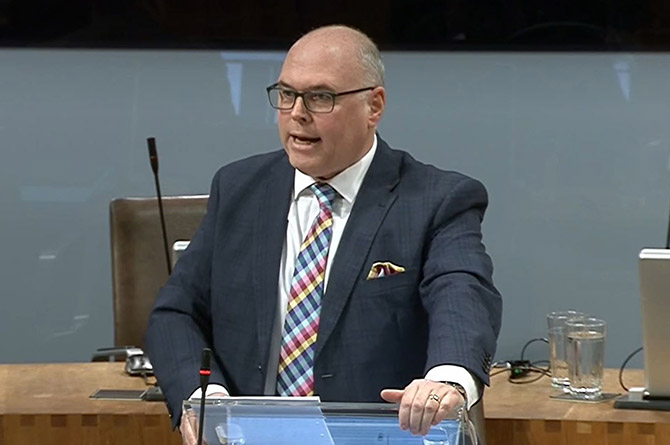Education
How Technology Is Enabling New Ways of Writing

Technology has altered almost every aspect of our lives, including writing. Technology continues to alter how we create, distribute, and read written information – from typewriters and computers to sophisticated digital platforms and software – this article looks at how technological advancements are making writing more accessible, creative, collaborative, and improving quality. For receiving reliable writing help visit essayservices for honest review!
Digital Tools for Writing
One of the major impacts of technology on writing is accessing digital tools that enhance and streamline its process. Traditional pen and paper have given way to word processors like Microsoft Word and Google Docs, with features like grammar check, spell check and formatting choices; these resources help authors produce crisper works while streamlining their writing process. For more tools, ask “is papercoach safe?”.
Scrivener and Ulysses provide authors with tools for managing complicated projects, like scripts and novels. These programs make it simple for writers to plan, draft, reorganize, and rewrite parts of their work, promoting an efficient writing process.
Software Enhances Creativity
Technology has also given us access to software designed to foster creativity. Writers may always have inspiration close at hand using apps like Evernote and OneNote, which allow them to jot down ideas, brief text passages, and research materials while on the road. Mind mapping programs like MindMeister and XMind help authors generate intricate storylines and concepts more easily by aiding the imagination and visualization of complex stories or ideas.
Artificial Intelligence (AI) has also had an impactful influence on creative writing. OpenAI-developed tools, like GPT-4 from OpenAI Labs, offer material production and enhancement suggestions and aid writers in overcoming writer’s block. AI platforms like this one provide writers with fresh motivation and support, making creative expression even greater.
Collaboration and Connectivity
Writing was once a solo pursuit, but thanks to the Internet, it’s much more communal. Real-time collaboration is enabled through platforms such as Google Docs, which allows multiple users to collaborate on documents simultaneously. Writers can instantly receive comments, share their work with colleagues, and edit as needed. This collaborative atmosphere strengthens ties among authors while improving output quality overall.
Thanks to social media and blogging services like Medium and WordPress, authors now have instant readership. Authors gain access to global reader engagement, criticism, publication opportunities, and reader criticism, increasing their readership and opening doors for discussion and the development of their writing careers.
Accessibility and Inclusivity
Thanks to technology, writing has never been more accessible to those with impairments. Speech-to-text programs like Dragon NaturallySpeaking make writing accessible for those who find typing by hand difficult. In contrast, text-to-speech devices in modern e-readers make reading material easy for those with visual impairments.
Writing workshops and online courses have made writing education more accessible than ever, with services like Coursera, Udemy, and MasterClass offering quality writing instruction from well-known authors and educators.
Improving Writing Quality
Technology has dramatically advanced writing standards with sophisticated editing tools like Grammarly, Hemingway Editor, and ProWritingAid that evaluate text for readability, style, and grammar and provide recommendations for enhancement. By employing these techniques, authors can increase the clarity and consistency of their writing while plagiarism detection programs like Turnitin and Copyscape ensure the uniqueness of authored materials and proofread their work against accidental plagiarized elements to ensure its originality.
Self-Publishing Opportunities
With more writers having greater freedom to reach readers through their writing, digital publishing platforms have completely changed the publishing landscape. Authors may now access a worldwide public for their writings through self-publishing platforms like Amazon Kindle Direct Publishing, Smashwords, and IngramSpark, rather than depending only on established publishing houses to have their work noticed. Nowadays, authors handle every step of the publishing process, including their own writing, editing, sales, and marketing!
Writing for Diverse Media
Thanks to technology, writing has become more widely utilized than conventional print media. These days, writers provide material for video games, podcasts, blogs, social media, and even video screenplays. Each medium and audience demands different strategies and techniques; for instance, writing social media requires succinctness and interactivity, while scripting interactive storylines requires script writing skills. As writers adapt to these diverse mediums, they are constantly expanding their skill sets and exploring new ways to engage with audiences.
Writing’s Future
Technology advances promise writing a bright future. Augmented and virtual reality (AR/VR) technologies could revolutionize narrative; writers could soon craft three-dimensional stories where readers interact directly with characters and settings.
Blockchain technology could revolutionize writing industry royalties and intellectual property rights. Authors’ intellectual property could be protected transparently and securely via smart contracts on blockchain systems, guaranteeing they receive fair compensation for their labor.
Conclusion
Technology has revolutionized the literary landscape. Thanks to digital tools and platforms, authors now have greater freedom to express themselves creatively while working collaboratively on higher caliber works. Writing will only advance further as technology progresses, giving authors access to new audiences while exploring uncharted territory – writing’s future looks bright with tech leading this exciting development!
Education
Teaching assistant struck off after asking pupil for photos of her body

A FORMER teaching assistant at Haverfordwest High School has been banned from working in education after sending highly inappropriate messages to two female pupils, including asking one girl to send him photos of her body.
Samuel Davies, who was employed at the school through apprentice agency Ap Prentis, was removed from the classroom in October 2022 when safeguarding concerns were raised. An Education Workforce Council (EWC) panel has now found his conduct to be sexually motivated and amounting to unacceptable professional behaviour.
Messages sent under false name
The panel heard that Davies contacted two mid-teen pupils on Snapchat using the name “Sam Bear Davies”. One pupil identified as Learner B received messages asking whether she felt comfortable sending him pictures. In one message he wrote: “I want to see that body and a few pics maybe?” followed by further requests for images.
Another girl identified as Pupil A accepted a friend request from the same account and was shocked to receive the message: “Oh hey, I am your teacher. Do not tell anyone, I would get into trouble, but I think you are really attractive.”
Davies also warned one of the girls not to tell anyone he had contacted her because he would “get into trouble”.
Both pupils later provided screenshots to senior staff which resulted in Davies being escorted off school grounds while an internal investigation began.
Previous concerns about boundary issues
Deputy headteacher and safeguarding lead Tracy Edwards told the hearing she had already spoken to Davies several times about his over familiar behaviour with pupils. Concerns had been raised including allegations that he offered teenagers a drag of a vape off school premises and that he had shown pupils photos of himself vaping in a school toilet. There were also reports that he had been overheard discussing pubs and clubs with under eighteens.
Although some of the earlier claims could not be verified, his behaviour escalated and a formal complaint was made once the social media messages were shared with staff.
Davies resigned from his role in January 2023. Police reviewed the matter but did not take further action.
Panel finds sexual motivation
The EWC committee found a number of allegations proven and concluded that Davies had deliberately targeted children under sixteen and that his actions were sexually motivated.
Panel chair Robert Newsome said Davies had abused his position and caused direct harm to pupils. He noted that Davies had shown no engagement with the disciplinary process, no insight and no remorse.
“This was a pattern that developed after he began his employment,” he said. “He knew what he was doing was wrong and took steps to hide it. His actions place him as a significant risk to learners.”
Davies did not attend the hearing and provided no representation. During the school’s internal investigation he denied all allegations.
Struck off indefinitely
The committee ordered that Davies be removed from the EWC register with immediate effect. He cannot apply for reinstatement for at least five years.
He has 28 days to appeal the decision to the High Court.
Community
Potential Ysgol Clydau potential closure ‘deeply concerning’

THE LAUNCH of a public consultation on the potential closure of Pembrokeshire school Ysgol Clydau just before Christmas has been called “deeply concerning” and unfair to local families.
At the May meeting of Pembrokeshire County Council, members backed a report of the School Modernisation Working Group which included statutory consultation on proposals to discontinue Manorbier Church in Wales Voluntary Controlled School and Ysgol Clydau in Tegryn.
A plea on behalf of Ysgol Clydau was previously made by Cllr Iwan Ward, local member, who said it was “the heart of our society not just a school, it’s family, a community, an anchor for children who deserve the opportunity to grow”.
He added that closure was “a disaster for the future of education locally” and was “not fair and was not moral”.
The Ysgol Clydau consultation has now been launched, on the eve of a plea to keep the school open being heard at County Hall.
A council statement accompanying the launch of the consultation says: “At its meeting on May 8, Pembrokeshire County Council considered a report of the School Modernisation Working Group which outlined the findings of a review of education provision in the Preseli area.
“In particular the review considered the extent of surplus school places in the area, set against a significant decline in the pupil population.”
A petition, opposing closure of the school, on the council’s own website, generated 648 responses, meaning it crossed the threshold to be heard at full council.
That petition call, along with a similar one for Manorbier school, which also crossed the threshold, with 1,511 signatures, is to be heard by councillors at the December 12 meeting of full council.
The Ysgol Clydau petition states: “We demand that Pembrokeshire County Council reconsider its decision to close Ysgol Clydau and instead prioritise the needs of our community by keeping the school open. We oppose the closure of Ysgol Clydau and call for full public scrutiny before any decision is made.
“We urge you to engage in a meaningful dialogue with the community, listen to our concerns, and work with us to find alternative solutions that support the needs of our children and families.”

Local Senedd Member Paul Davies has voiced his opposition to the proposal to close Ysgol Clydau, describing the timing of the consultation—just before Christmas—as “deeply concerning” and unfair to local families.
Mr Davies also highlighted the impact that closing Ysgol Clydau would have on the local community and the Welsh language.
“Ysgol Clydau is a crucial part of the local community, and its closure would have a huge impact on the local area. It’s unacceptable that this consultation has been launched without any discussion with local stakeholders and announcing it just before Christmas is very disappointing.
Education
Paul Davies MS opposes proposed closure of Ysgol Clydau

Senedd Member criticises ‘deeply concerning’ timing of consultation
LOCAL Senedd Member Paul Davies has spoken out against Pembrokeshire County Council’s proposal to close Ysgol Clydau, warning that the timing of the public consultation — launched in the weeks before Christmas — is “deeply concerning” and unfair to affected families.
Mr Davies said the school plays a vital role in the community, and that any attempt to close it would have a damaging impact locally, including on efforts to promote and protect the Welsh language.

“Ysgol Clydau is a crucial part of the local community, and its closure would have a huge impact on the local area,” he said. “It’s unacceptable that this consultation has been launched without any discussion with local stakeholders, and announcing it just before Christmas is very disappointing.”
He pointed to the school’s strong record, noting that Estyn inspectors highlighted positive relationships between staff and pupils and praised a curriculum that makes purposeful use of the surrounding area to inspire curiosity.
“Closing this school would be to the detriment of local families, and it would also undermine efforts to protect and promote the Welsh language in the community,” he added.
Mr Davies urged Pembrokeshire County Council to ensure the consultation is meaningful by “genuinely listening to local voices” and working with parents, representatives and the wider school community to find a constructive way forward.
-

 Crime5 days ago
Crime5 days agoPhillips found guilty of raping baby in “worst case” judge has ever dealt with
-

 Crime4 days ago
Crime4 days agoKilgetty scaffolder sentenced after driving with cocaine and in system
-

 Crime4 days ago
Crime4 days agoHousing site director sentenced after failing to provide breath sample following crash
-

 Crime4 days ago
Crime4 days agoMotorist banned for three years after driving with cannabis in system
-

 Education3 days ago
Education3 days agoTeaching assistant struck off after asking pupil for photos of her body
-

 News6 days ago
News6 days agoJury retires tomorrow in harrowing Baby C rape trial
-

 Crime4 days ago
Crime4 days agoMilford Haven pensioner denies exposure charges
-

 Local Government6 days ago
Local Government6 days agoNew defamation row erupts after anonymous website targets Herald editor

















